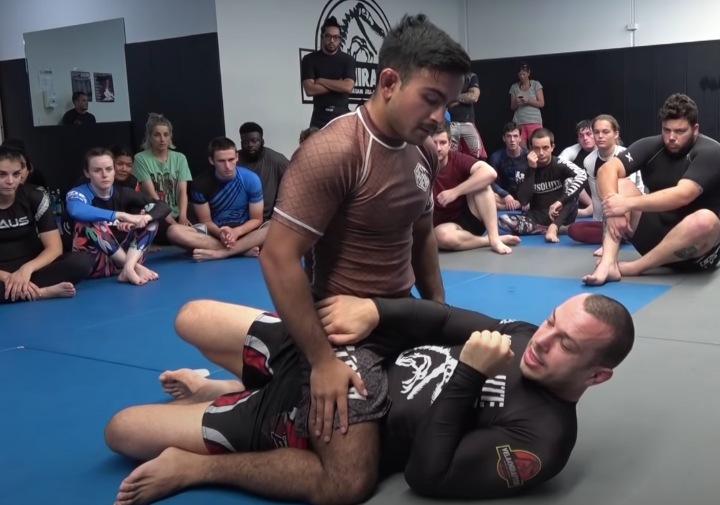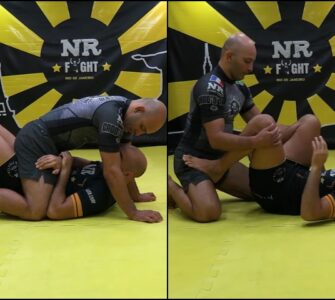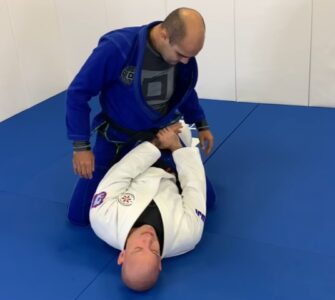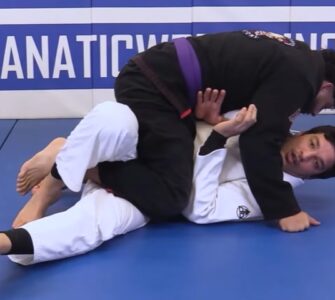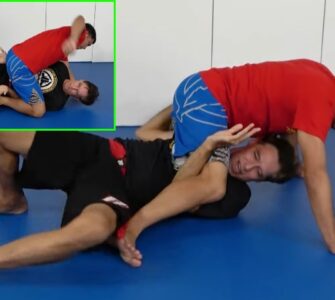The mount position is such a dominant position, and escaping it can be extremely difficult sometimes. When grappling against a bigger and stronger opponent, this is usually where they want to be. From here, they can use not only the strength and power from their own body, but they also have the force of gravity on their side. We see the mount position a lot if we watch matches between two larger grapplers or jiu jitsu players. As larger grapplers, these guys have an easier time holding positions such as the mount, and that’s why they prefer to be there.
Getting Back Your Guard
As a smaller grappler, you want to avoid being flat on your back as much as possible and being on bottom in the mount position is exactly that. When most of us start training in grappling or jiu jitsu, we learn the traditional buck and roll escape. You know, overhook an arm, bridge and roll, get on top into the closed guard. That’s pretty basic and traditional stuff which we have definitely all seen. However, this traditional escape probably won’t work against a much larger opponent. Why? Because the buck and roll escape involves blasting through your opponent’s hips and using a bit of strength to overturn them. It would be great to be able to use this escape on a bigger guy to get on top, but it’s just too unrealistic.
Their hips are probably stronger than yours, they weigh a lot more than you do, and they have gravity on their side. A more viable option would be to escape back to half guard, where you can start to create space and look to work your sweeps. Escaping back to half guard has become instrumental in my game as far as avoiding getting stuck in mount. If your opponent is very tall or lanky, then there might be more space in between their hips and your hips from the mount position, which makes this escape ago-to against those longer guys.
After getting back to the half guard, we definitely want to start creating as much space aspossible from there. Usually, instead of settling for a traditional half guard, we would definitely want to use the knee shield, also known sometimes as the Z guard, to brace against our opponent’s body to make sure they cannot put any more pressure into us. This should definitely be the first mount escape that you go for against a bigger and stronger opponent.
Training Better Escapes
I mean think about it, how many of you guys go to open mat at your gym or academy and drill hardcore escapes with big and strong opponents for several hours? Probably not a lot of you, but I don’t blame you guys at all. Drilling escapes isn’t fun, because it’s extremely difficult sometimes, and I’m sure that most of us would rather be drilling our favorite guard pass or our new favorite back take. However, if you make the time to put yourself through the gauntlet and consciously work on your escapes from inferior positions, then you will see a huge improvement in your game when you do end up in these advantageous spots.
Situational training is great for improving your escapes. Doing timed rounds where you have to escape from either side control or mount over and over again is a great way to increase your skill and technique in these areas. I can tell you that when I started doing this on the regular, my escapes vastly improved. So, before you go into some of the best ways and techniques to escape inferior positions, make sure that you are implementing escape drills into your training.
2019 ADCC bronze medalist Lachlan Giles shows mount escapes based on where the opponent’s weight is placed:
Get Out Of Brazilian Jiu-Jitsu’s Worst Positions, Gi Or No-Gi, With Lachlan Giles’s Insights Into Escaping.
The 2019 ADCC Absolute Medalist Teaches How To Get Out Bad Grappling Positions With Narrated Live Rolling Of Him Performing The Techniques.

